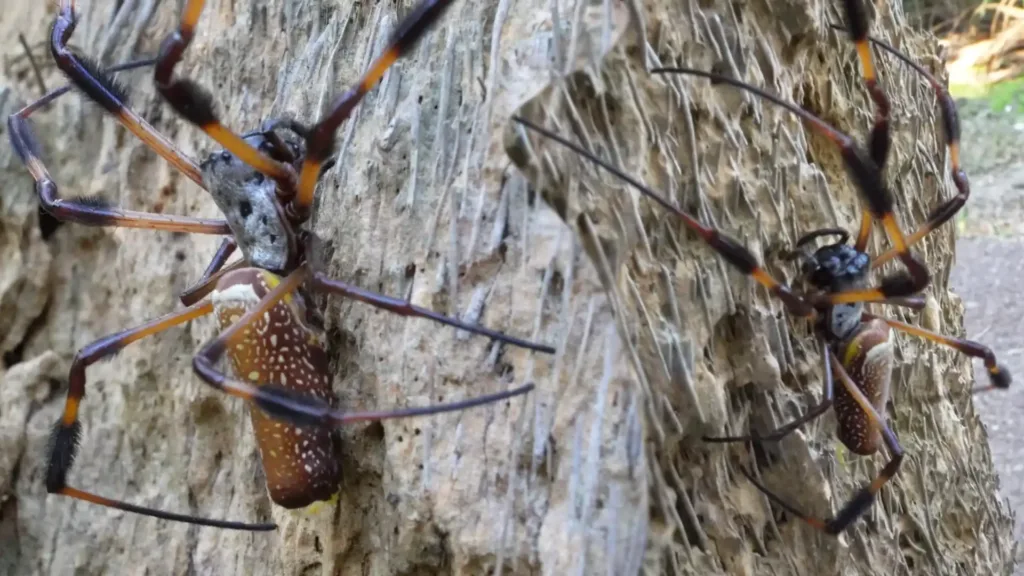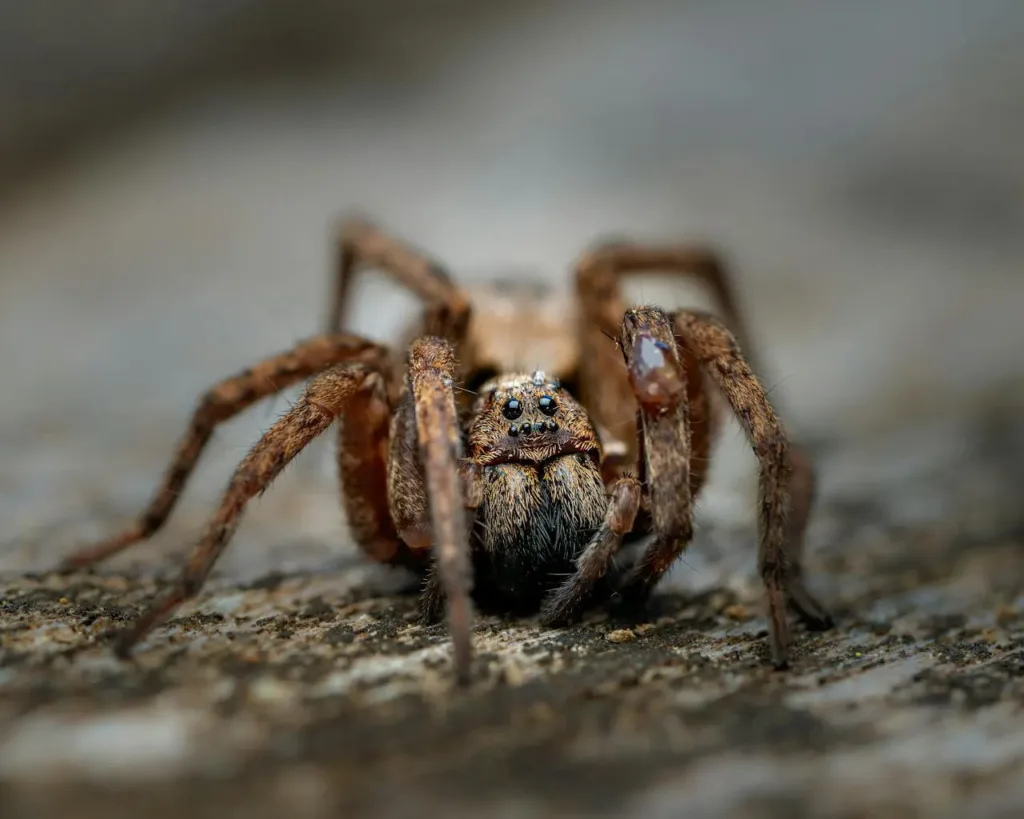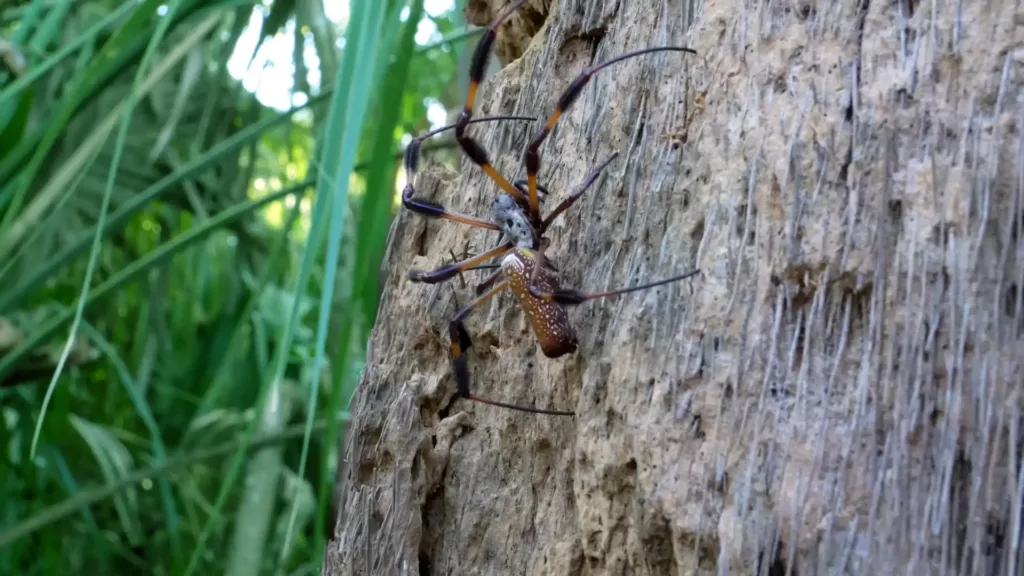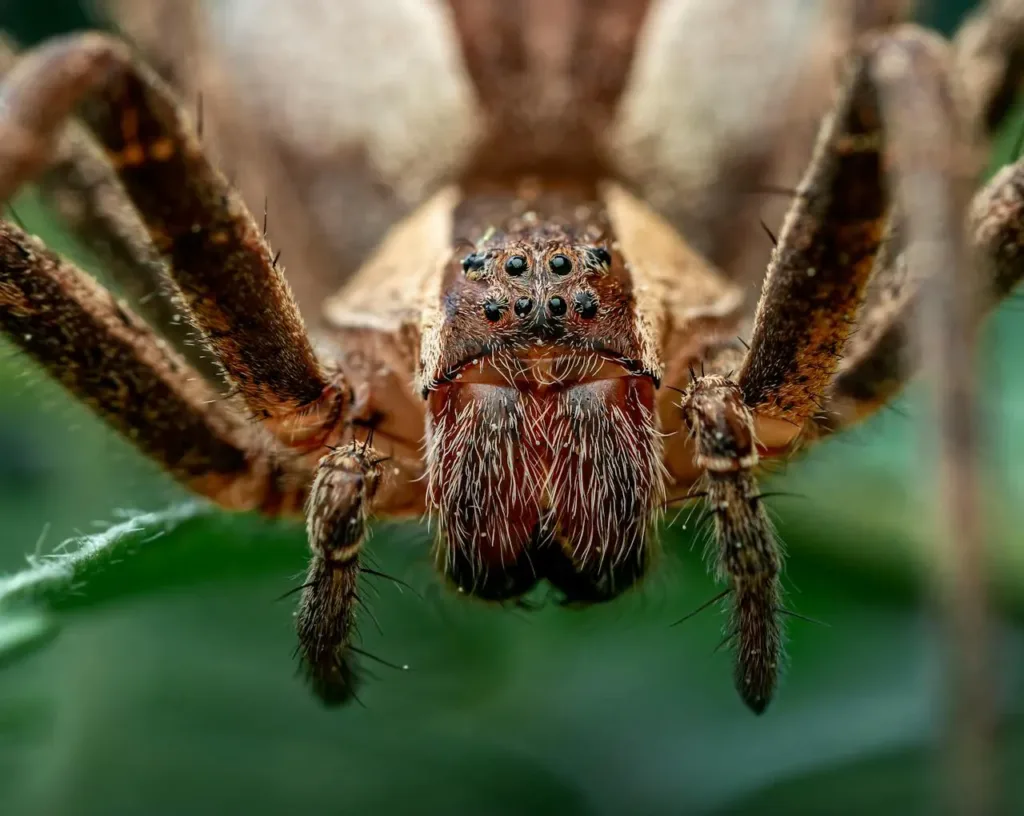Welcome to a world where the banana spider is more than just a cool name. The term ‘banana spider’ is used to describe several species of spiders found in tropical and subtropical regions.
Banana spider is a term used because some spiders, especially the Brazilian wandering spider, can sometimes be found in banana shipments. There are urban myths that say spiders lay eggs in banana flowers, and when you peel a banana, you’ll be surprised, but that’s not true. But spiders can sometimes get in banana shipments. If you’re worried about this, unload bananas from boxes and wear thick gloves.
Let’s bust the myths, confirm the facts, and get up close and personal with these colorful characters.
Ever wondered about the banana spider bite? Or how do they differ from their cousin, the Brazilian wandering spider? Just how big are giant banana spiders? And what’s the big deal about the Golden Silk Orb-Weaver (Genus: Nephila)?
Well, you’re about to find out! Buckle up for a creepy and fun ride into the world of spiders. We’re going to hang up our fears while we spin a tale of these awesome and deadly spiders that are as intricate as their orb webs.
Table of Contents
Quick Facts
- The term ‘banana spider‘ refers to several species of spiders within the arachnid family, banana spiders, found in tropical and subtropical regions, from the giant golden orb weaver to the venomous Brazilian wandering spider.
- Banana spiders can be found in different parts of the world, such as South and Central America, and each has a unique role in their ecosystem.
- Not all banana spider bites are dangerous. Some banana spiders have venom that can harm humans.
- Dealing with banana spiders in your home is manageable with safe methods, understanding their behavior, and respecting their natural place.
- Like other arachnids, Banana spiders are an important part of their ecosystem, controlling insect populations.
Banana Spider Facts

You’ve heard of spiders big enough to lasso, right? Well, meet the banana spider, a member of the arachnid family. These arachnids are known for their web-spinning skills and weird behavior.
No, it’s not a fruit-loving arachnid. It’s a nickname for several species of spiders, including the Brazilian wandering spider and the golden orb spider (Trichonephila clavipes), also known as the Golden silk orb-weaver.
These spiders are quite the sight to see when they’re hanging in their webs. A banana spider bite might seem a little painful and scary, but for most spider species, it’s not harmful to humans.
The big daddy of this spider family is the Brazilian wandering spider (Genus: Phoneutria), which has the most potent bite. But guess what? It’s more afraid of you than you’re of it. Remember, they’re not planning any tricks. They’re just trying to live their lives.
A golden orb-weaver’s egg sac is a beauty to see, often nestled in the safety of the spider’s web. These spiders are part of the Central American genus. They inhabit South and Central regions and live in webs that shine like gold in the sun.
The Banana Spider: What does it look like

Meet the banana spider, an arachnid family member hanging out in bromeliad plants. Banana spiders have distinct physical characteristics that set them apart from other spiders. Use this chart to help you compare one type of banana spider to another.
| Spider Type | Appearance | Size | Behavior |
|---|---|---|---|
| Golden Silk Orb-Weaver | Females: Golden-yellow body and legs with dark bands; Males: Smaller and less colorful | Females: Body up to 2 inches (5 cm), Leg span up to 5 inches (12.7 cm) | Spins large, golden-hued webs in open areas between trees and shrubs. |
| Brazilian Wandering Spider | Brown with distinctive patterns, including dark bands on legs | Body up to 2 inches (5 cm), Leg span up to 6 inches (15 cm) | Active hunters, do not build webs, often found in banana shipments. |
| Yellow Sac Spider | Pale yellow or greenish with dark markings on the tips of legs | Body up to 0.4 inches (1 cm) | Creates small silken sacs for hiding during the day. |
| Hawaiian Garden Spider | Brightly colored with black and yellow or black and white pattern on the abdomen | Females: Body up to 1 inch (2.5 cm) | Spins large, circular webs often found in gardens and open spaces. |
Banana spiders are part of the Central American genus, the Phoneutria family. Their bite is less common but can be severe in humans. If bitten by the banana spider — address this issue medically. And don’t even get us started on the wandering spider bite!
The egg sac is another cool thing. Protected by the mother spider, the sac has hundreds of spiderlings. On the lighter side, imagine being a spider daycare manager!
Also, these spiders are web spinners. Their colorful webs often hang between trees and are works of art. In fact, banana spiders hanging in their webs are common in many areas. But despite the name, you won’t find these guys in your grocery store’s fruit aisle!
The golden silk orb weaver is a cousin of the banana spider. They’re both part of the orb family and share many similarities. But remember, not all that glitter is gold, and not all that gold is a golden, golden silk orb-weaver!!
Banana spiders show the amazing diversity of the spider world. Next time you see one, appreciate its features but from a safe distance!
Where do Banana Spiders live?

They thrive in warm, humid environments, so tropical regions are their happy place. Their habitats range from Central and South America to parts of the southern United States. They like to hang out in warm, humid places like rainforests, gardens, and even homes.
Although their common name might suggest they love bananas, these spiders got their name from hiding in banana shipments. They have a reputation for being aggressive. They’re also known as the Brazilian wandering spider and are infamous for their venom. A banana spider bite can be serious and, in rare cases, can be fatal to humans.
One of the species is the red-faced banana spider, which is often mislabeled. This spider has a red face and yellow spots and is found in tropical rainforests. Knowing its characteristics and habitat will help you identify this species.
Banana spiders spin big intricate webs and lay their egg sac within the web for protection. These spiders are not to be confused with bromeliad spiders or other species that may share similar habitats.
Banana Spider Bite: Is it Venomous to Humans?
Is it harmful to humans? The answer is YES, but it’s a bit more complicated. Like many arachnids, banana spiders have venom they use to subdue their prey and defend themselves.
The banana spider, or Phoneutria as scientists call it, packs a venomous punch that can be uncomfortable but rarely causes serious health complications. The pain from a banana spider bite is less severe than a bee sting.
This arachnid, not to be confused with the harmless orb weaver, spins a web of deceit to catch its prey. Mostly found in tropical climates, they hide in bromeliad spider nests and even the occasional egg sac.
The severity of a banana spider or wandering spider bite depends on the amount of venom injected. So, while you don’t want to get bitten, there’s no need to panic if you do. They’re not as bad as they seem!
Brazilian Wandering Spider Vs Banana Spider

The banana spider is often mislabeled as the Brazilian wandering spider but is actually an orb weaver. Unlike the wandering spider, it’s not aggressive towards humans, and its bites are less harmful.
A Brazilian wandering spider bite is serious, especially for children, and needs immediate medical attention. Symptoms are intense pain, swelling, and, in rare cases, severe complications that may require antivenom.
They are interesting creatures with their egg sac looking like tiny white silk balls. They are also known as bromeliad spiders and spin their web between bromeliad plants.
Banana Spiders in the Ecosystem
These eight-legged creatures, also known as Phoneutria species, play a surprisingly important role in their environment as arachnids. Banana spiders contribute to the balance of their ecosystem by preying on various insects. Their ecological role is pest control, as they prey on harmful insects. This natural control can be a blessing for farmers and gardeners.
Interestingly, they also serve as food for larger predators, forming a link in the food chain. Their egg sacs are part of this cycle, providing food for opportunistic creatures.
Despite their scary reputation, interactions between these spiders and humans aren’t always bad. A spider bite from this species can be painful but not life-threatening.
In fact, banana spider bites are not as harmful as other spider bites, such as female brown recluse or black widow spiders.
Their webs are often seen as a nuisance but are actually part of the natural beauty of the ecosystem. Despite their name, they are not found in banana plants. They build webs in foliage and human dwellings.
So next time you see a spider, remember they’re not just creepy crawlies but ecological superheroes.
How to Deal with Banana Spiders at Home
These arachnids are harmless spiders and can be managed with simple precautions. They are more interested in catching flies than in causing chaos.
The Hawaiian garden spider is known for its distinctive appearance and behavior. It is not dangerous to humans and stays in its territory, displaying unique physical features and rarely causing harm.
So you’re thinking, “What if it bites?” A spider bite is unpleasant but not life-threatening to humans. Most spiders are timid and would rather hide in their web than interact with humans.
Another fun fact is their egg sac is a work of art. A small silken structure tucked away in a safe corner. Isn’t nature cool?
But remember, we’re living with these creatures – a little respect goes a long way!
Q&A
What is a Banana Spider?
A Banana Spider, also known as the Golden Silk Orb-Weaver, is a giant, colorful spider in the arachnid family known for its distinctive appearance and golden webs. They get their name from hanging out in banana plants, although they don’t really like the fruit. Banana spiders, like other arachnids, are fascinating creatures with unique behaviors.
Where can I find one?
Banana Spiders are found in warmer areas across the Americas and parts of Africa and Asia. They love tropical climates and are often found in gardens, forests, and banana plantations!
Is a Banana Spider bite dangerous to humans?
A Banana Spider bite might hurt and scare you a bit, but it’s not life-threatening to humans. Symptoms are localized pain, redness, and mild swelling. But these symptoms will subside quickly. But if you’re bitten and feeling unwell, seek medical attention immediately.
How is a Banana Spider different from a Brazilian Wandering Spider?
Banana Spiders and Brazilian Wandering Spiders often get mixed up due to their common association with bananas. While the Banana Spider is harmless, the Brazilian Wandering Spider is one of the most venomous spiders in the world. The wandering spider is more aggressive than most banana spiders and roams at night while the banana spider stays in its golden web.
What do Banana Spiders do in the ecosystem?
Banana Spiders are natural pest controllers, and they manage insect populations. Their beautiful, sturdy webs easily trap all sorts of insects. So, if you see one in your garden, think twice before shooing it away – it might be helping you keep those pesky bugs away!
What about a Hawaiian garden spider bite?
A Hawaiian garden spider bite is not dangerous to humans. Symptoms are mild and can include pain, numbness, and skin swelling. In rare cases, nausea and dizziness. However, these symptoms are not severe and will subside quickly. If you experience any unusual symptoms after a bite, seek medical advice.
What are the two suborders of spiders?
The Mygalomorphae and Araneomorphae are the two suborders of spiders. The Mygalomorphae is a diverse suborder containing about 2,500 species in 15 families, six of which are found in Ohio. The Araneomorphae suborder represents the world’s largest, with 38,500 spiders in 94 families, and includes the most commonly encountered spiders.
What are some examples of spiders in the Araneomorphae suborder?
Some examples of spiders in the Araneomorphae suborder include:
Garden spiders: They are often large, strikingly colored, and build easily recognizable webs.
Funnel Weavers: This family of spiders includes Grass Spiders and House Funnel Weavers.
Orbweavers: This family of spiders is large, with species such as the Arabesque Orbweaver, the Arrow-Shaped Micrathena, and the Banded Garden Spider.
What are the defining characteristics of a spider?
Spiders have two main body parts: the front bit, called the cephalothorax (or prosoma), and the back bit, called the abdomen (or opisthosoma). The cephalothorax is combined with the head and chest and has four pairs of eyes, four pairs of legs for walking, a pair of tiny leg-like feelers called pedipalps, and mouthparts with fangs called chelicerae. The abdomen has special bits called spinnerets that make silk. These are what set spiders apart from other arachnids.
What is special about spider silk?
All spiders spin silk, but they use it in different ways. Some use it to protect their eggs or create a hidey hole. Other spiders have up to 7 types of silk for various purposes, sticky or not. The combination of spider silk’s strength and elasticity means it can stop flying insects heavier than the web.

Leave a Comment